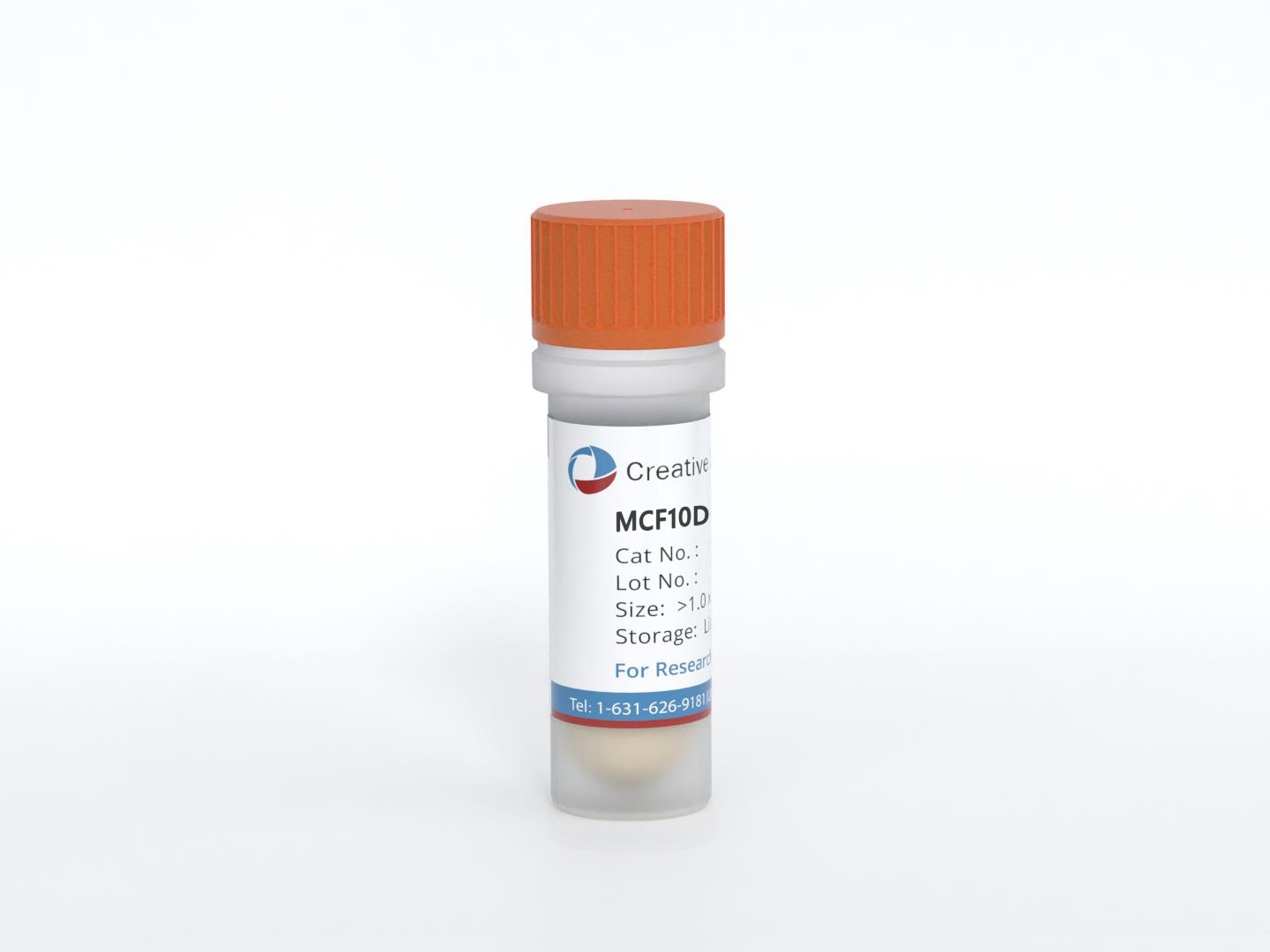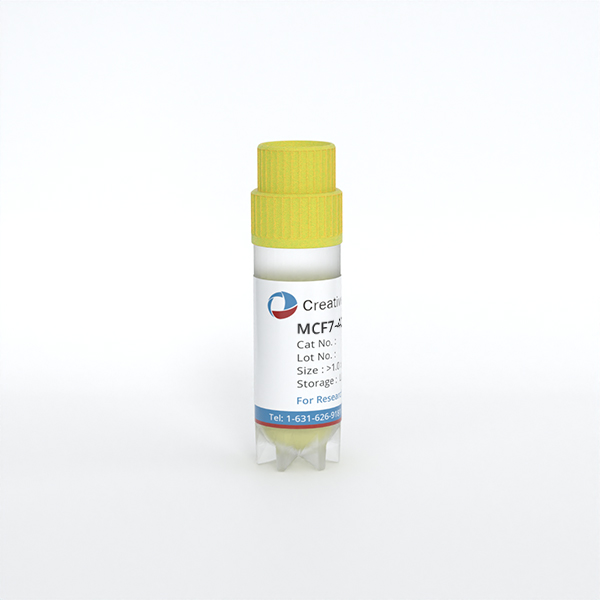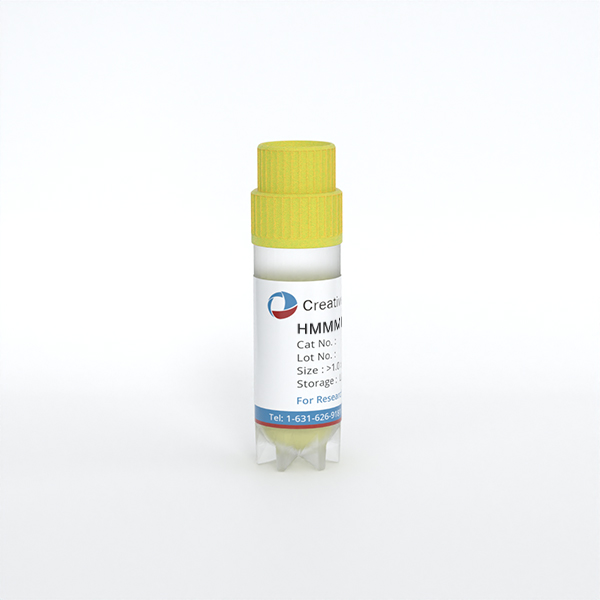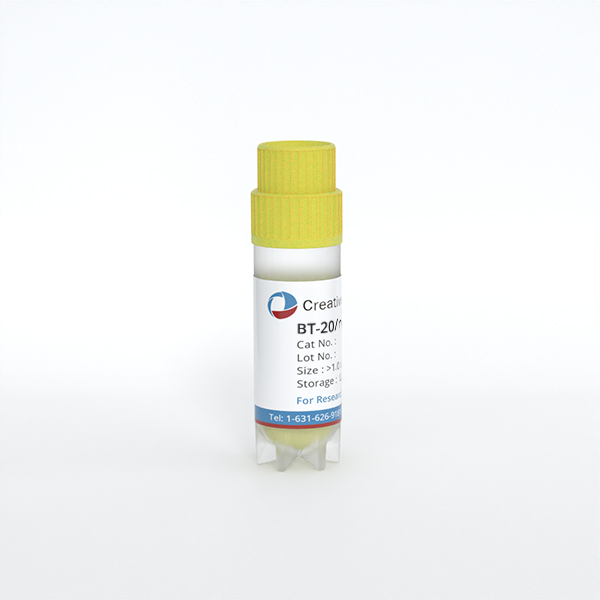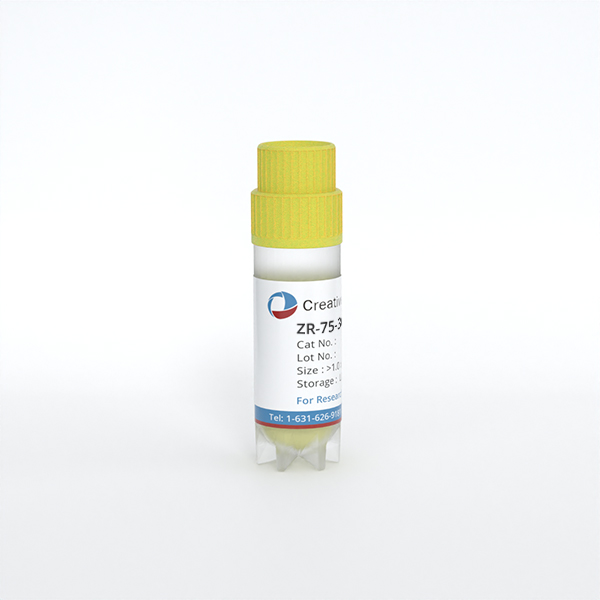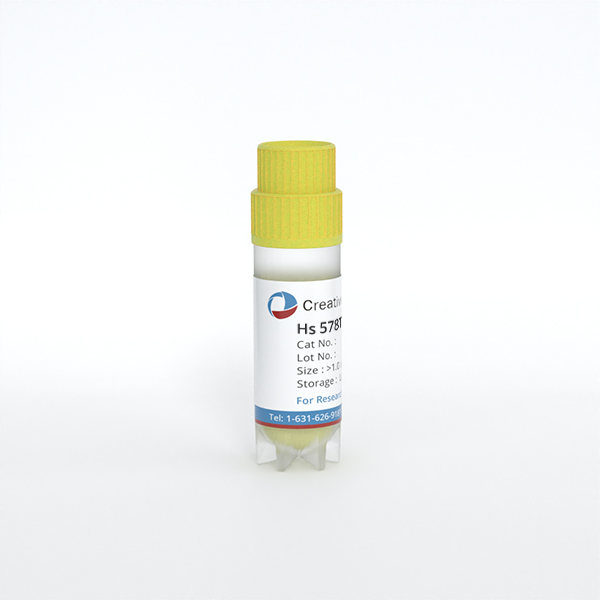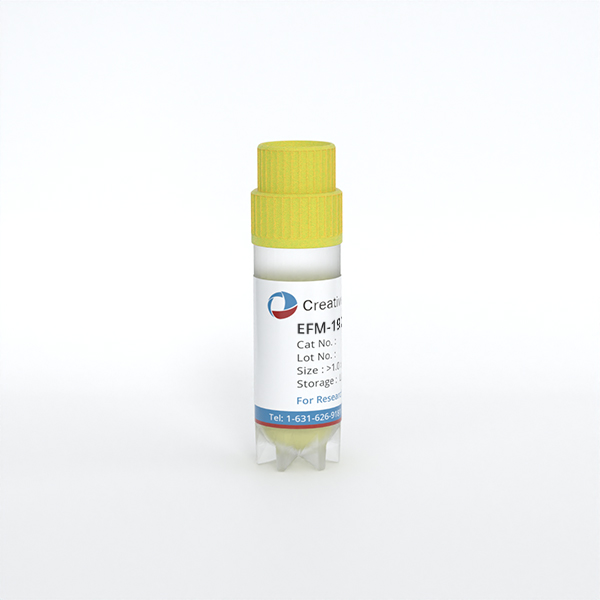
EFM-192C
Cat.No.: CSC-C0388
Species: Homo sapiens (Human)
Source: Pleural Effusion Metastasis
Morphology: epitheloid adherent cells growing as monolayers
Culture Properties: monolayer
- Specification
- Q & A
- Customer Review
Cat.No.
CSC-C0388
Description
Established from the pleural effusion of the left side (14 days after EFM-192A) of a 46-year-old Caucasian woman with breast adenocarcinoma; sister cell lines EFM-192A and -192B show differences in molecular aspects; erbB-2 gene is amplified and overexpressed
Species
Homo sapiens (Human)
Source
Pleural Effusion Metastasis
Culture Properties
monolayer
Morphology
epitheloid adherent cells growing as monolayers
Karyotype
Highly rearranged human hypohexaploid karyotype with 10% polyploidy - 122-138<6n>XXXXX/XXXXXX - related to EFM-192A and EFM-192 B
Disease
Breast Carcinoma
Quality Control
Mycoplasma: negative in DAPI, microbiological culture, RNA hybridization assays
Immunology: cytokeratin +, cytokeratin-7 +, cytokeratin-8 +, cytokeratin-17 -, cytokeratin-18 +, desmin -, endothel -, EpCAM -, GFAP -, neurofilament -, vimentin -
Viruses: EL
Immunology: cytokeratin +, cytokeratin-7 +, cytokeratin-8 +, cytokeratin-17 -, cytokeratin-18 +, desmin -, endothel -, EpCAM -, GFAP -, neurofilament -, vimentin -
Viruses: EL
Storage and Shipping
Frozen with 70% medium, 20% FBS, 10% DMSO at about 1.5 x 10^6 cells/ampoule; ship in dry ice; store in liquid nitrogen
Synonyms
EFM192C
Citation Guidance
If you use this products in your scientific publication, it should be cited in the publication as: Creative Bioarray cat no.
If your paper has been published, please click here
to submit the PubMed ID of your paper to get a coupon.
Ask a Question
Write your own review
- You May Also Need
Related Products
Featured Products
- Adipose Tissue-Derived Stem Cells
- Human Neurons
- Mouse Probe
- Whole Chromosome Painting Probes
- Hepatic Cells
- Renal Cells
- In Vitro ADME Kits
- Tissue Microarray
- Tissue Blocks
- Tissue Sections
- FFPE Cell Pellet
- Probe
- Centromere Probes
- Telomere Probes
- Satellite Enumeration Probes
- Subtelomere Specific Probes
- Bacterial Probes
- ISH/FISH Probes
- Exosome Isolation Kit
- Human Adult Stem Cells
- Mouse Stem Cells
- iPSCs
- Mouse Embryonic Stem Cells
- iPSC Differentiation Kits
- Mesenchymal Stem Cells
- Immortalized Human Cells
- Immortalized Murine Cells
- Cell Immortalization Kit
- Adipose Cells
- Cardiac Cells
- Dermal Cells
- Epidermal Cells
- Peripheral Blood Mononuclear Cells
- Umbilical Cord Cells
- Monkey Primary Cells
- Mouse Primary Cells
- Breast Tumor Cells
- Colorectal Tumor Cells
- Esophageal Tumor Cells
- Lung Tumor Cells
- Leukemia/Lymphoma/Myeloma Cells
- Ovarian Tumor Cells
- Pancreatic Tumor Cells
- Mouse Tumor Cells
Hot Products
